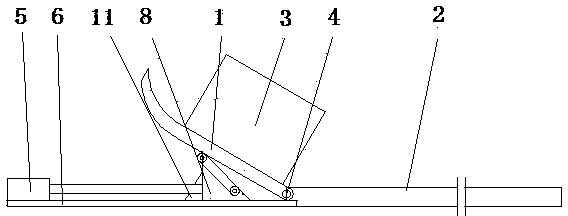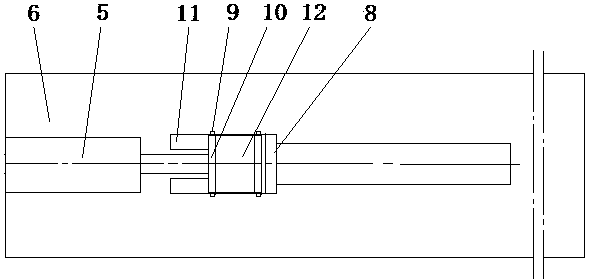Cervical vertebra flexed position magnetic resonance imaging fixing device
A fixed device, magnetic resonance technology, applied in medical science, sensors, diagnostic recording/measurement, etc., can solve the problems of reducing the quality of image diagnosis, non-standard scanning imaging of patients' flexion position, etc., achieving novel structure, convenient scanning, and automatic adjustment. Effect of head and neck flexion angle
- Summary
- Abstract
- Description
- Claims
- Application Information
AI Technical Summary
Problems solved by technology
Method used
Image
Examples
Embodiment Construction
[0018] Below in conjunction with accompanying drawing, the present invention is further described:
[0019] As shown in the accompanying drawings, a cervical spine flexion magnetic resonance examination fixation device includes a head and neck pad 1, a chest and back pad 2, and a backing board 3, and a magnetic resonance scanner is embedded in the head and neck pad 1, the chest and back pad 2, and the backing board 3 The coil is characterized in that it is provided with a rotating shaft 4, a telescopic cylinder 5, a base plate 6 and a buckling support device 7, the front end of the head and neck pad 1 is hinged to the chest and back pad 2 through the rotating shaft 4, and scanning coil backing boards 3 are respectively provided on both sides, The lower part of the head and neck pad 1 is provided with a base plate 6, and the base plate 6 is provided with a buckling support device 7. One end of the base plate 6 is fixedly connected with the chest and back pad 2, and the other end...
PUM
 Login to View More
Login to View More Abstract
Description
Claims
Application Information
 Login to View More
Login to View More - R&D
- Intellectual Property
- Life Sciences
- Materials
- Tech Scout
- Unparalleled Data Quality
- Higher Quality Content
- 60% Fewer Hallucinations
Browse by: Latest US Patents, China's latest patents, Technical Efficacy Thesaurus, Application Domain, Technology Topic, Popular Technical Reports.
© 2025 PatSnap. All rights reserved.Legal|Privacy policy|Modern Slavery Act Transparency Statement|Sitemap|About US| Contact US: help@patsnap.com



